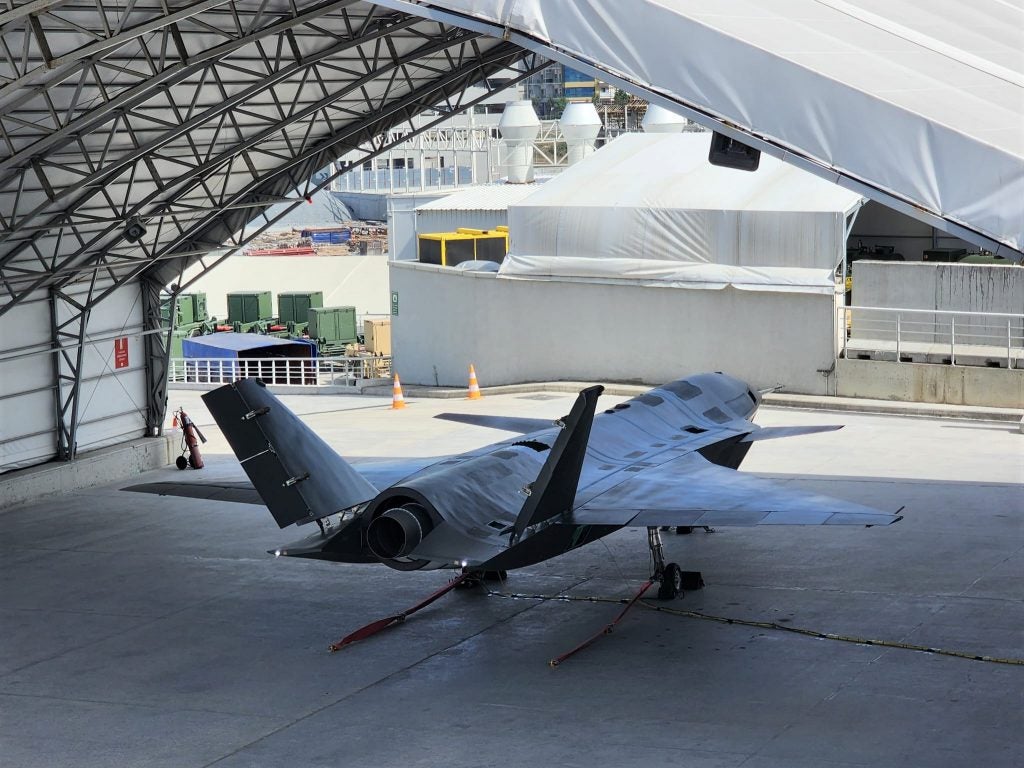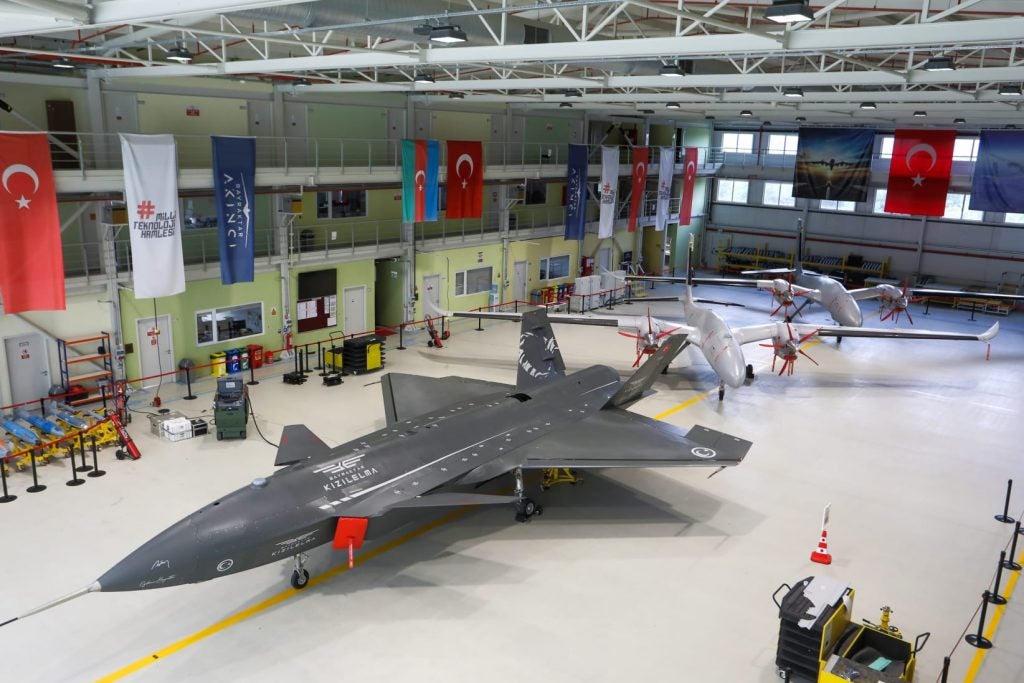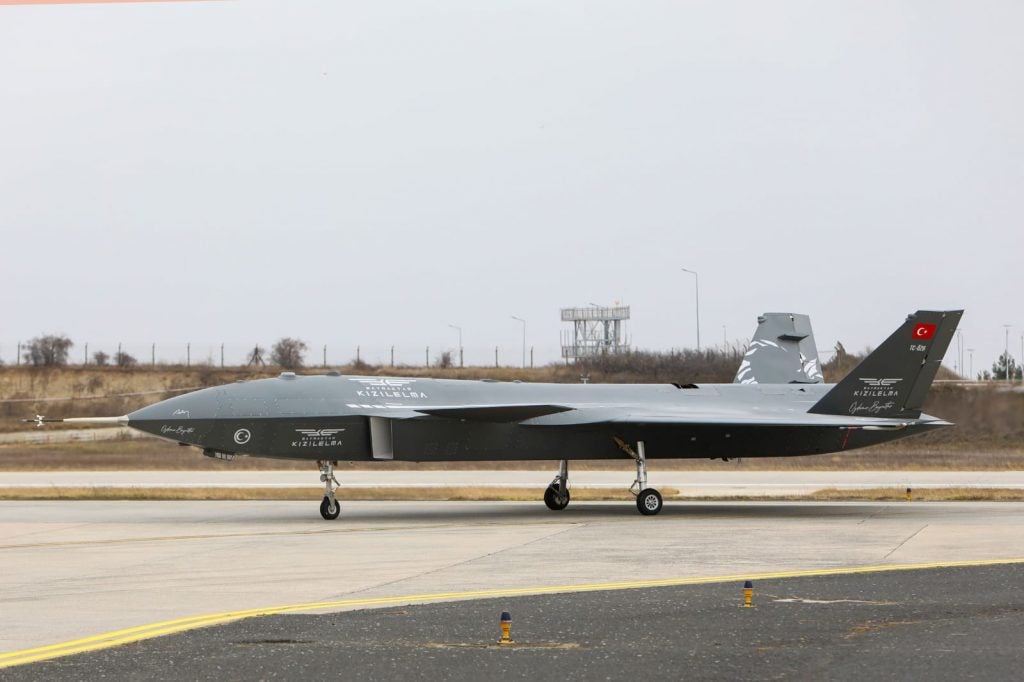Turkey’s Unmanned Fighter Aircraft Bayraktar KIZILELMA Successfully Completes Its First Automatic Taxi Testing
Another critical stage in the development of the Bayraktar KIZILELMA, Turkey’s first unmanned fighter aircraft project developed by Baykar, has been completed. On Sunday, November 20, Bayraktar KIZILELMA successfully completed its first automatic taxi and ground driving tests at the company’s AKINCI Flight Training and Test Center in Tekirdağ, Çorlu. The aircraft’s engine, control, brake, and fuel systems were tested under the supervision of Baykar Chairman of the Board of Directors Selçuk Bayraktar. With this, Bayraktar KIZILELMA is now one step closer to its maiden flight.
Baykar had previously announced that Bayraktar Kızılelma’s first engine integration test had been completed successfully. The company’s statement did not specify which engine was integrated into the prototype of the aircraft, but it was most likely the Ivchenko AI-25. On November 11, 2021, Baykar and Ukrainian engine manufacturer Ivchenko-Progress signed an agreement for the supply of AI-25TL and AI-322F jet engines for Bayraktar Kızılelma at the SAHA EXPO Defense and Aviation Fair in Istanbul. However, the war, which began with Russian President Vladimir Putin’s order to invade Ukraine three months after the agreement was signed, has slowed the delivery of the engines. Despite the fact that the company has been subjected to two air strikes in the nine months since the war began, it is claimed that it has delivered 20 jet engines to Baykar.
Responding to GDH Digitial’s questions on the subject at TEKNOFEST 2022, Selçuk Bayraktar, Chairman of the Board of Baykar Tech, stated that despite the war, Ukraine continues to deliver engines for the KIZILELMA Combatant Unmanned Aircraft System. However, as a backup plan, the company intends to integrate the TEI-TF6000 Turbofan Engine, which is still in development by TEI and has similar thrust values to the AI-322 afterburner turbofan engine, into Kızılelma.
Bayraktar Kızılelma is an unmanned fighter aircraft with a turbofan engine and stealth capabilities that Baykar Tech is currently designing and developing. Baykar began working on the KIZILELMA in 2013, and the conceptual design visuals were released on July 20, 2021. It was first showcased publicly at Teknofest, which took place in Samsun from August 30 to September 4, 2022. According to Baykar, the aircraft’s fuselage, which is expected to have a low radar trace, was designed with stealth technology. The vertical tail and front horizontal control surfaces (wings) are designed to provide high maneuverability. Furthermore, the aircraft’s wing structure and fuselage were designed to allow it to land and take off on short-runway ships like the TCG Anadolu, which is currently undergoing cruise tests.

Bayraktar Kızılelma, like Bayraktar Akıncı, will be developed in different configurations with different features. KIZILELMA-A, the first version of the Kızılelma planned to enter service, will use the Ivchenko-Progress AI-25TLT turbofan engine and will travel at subsonic speeds. The Kızılelma-B variant will fly at supersonic speeds thanks to the AI-322F engine. Two AI-322F afterburner engines are expected to power Kızılelma-C variant. Kızılelma, which is expected to have a take-off weight of 6 tons, will be able to use all of Turkey’s current munitions, with a useful load capacity of 1500 kilograms. Bayraktar Kızılelma, which is expected to have a 5-hour endurance at an operational altitude of 35,000 feet and a mission radius of 500 nautical miles, will also have high situational awareness thanks to the AESA radar that will be integrated.

The first flight test of Bayraktar Kızılelma is scheduled for 2023. The company, which frequently reports that the Bayraktar Kızılelma is going through a similar process to the Bayraktar Akıncı, states that Akıncı was accepted into TAF inventory approximately 1.5 years after its first flight. Based on the similarities in the two platforms’ development trajectories it appears likely that the Bayraktar Kızılelma will enter the inventory at the end of 2024 or the beginning of 2025, presuming nothing goes wrong.

